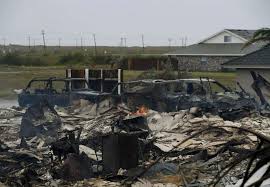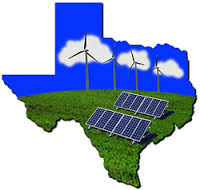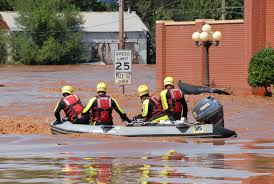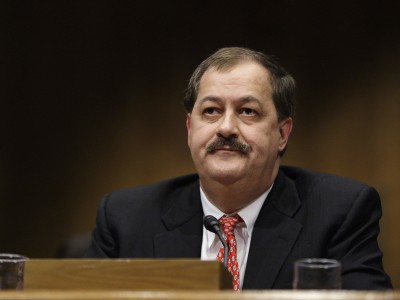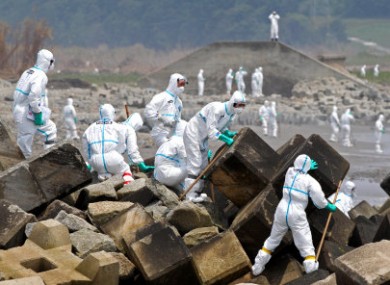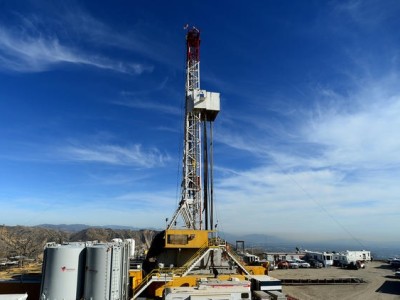Disaster Law
Guest Bloggers Rob Verchick and Matt Shudtz: Law Professors from Every Coast Ask SCOTUS to Weigh in on Louisiana Coastal Wetlands Case
Professors Argue Fifth Circuit Decision Upsets Federal/State Court Balance, Will Prevent States from Relying on Their Own Laws to Protect Important Natural Resources
Last month, more than two dozen law professors from around the country filed a friend-of-the-court brief with the U.S. Supreme Court, urging a fresh look at a lower court decision with sweeping implications for the balance of power between states and the federal government. The issue is vital to Louisiana because it affects whether oil and gas …
CONTINUE READINGThe Dark Art of Estimating Flood Risks
The 100-year flood and the 500-year flood are both very rough estimates.
My title is a little unfair. So far as I can tell, the people who are trying to figure out the 100-year or 500-year floods in various places are hard-working professionals, applying their expertise to a difficult problem. But there are a lot of uncertainties that get concealed behind the final numbers. The consequence is …
Continue reading “The Dark Art of Estimating Flood Risks”
CONTINUE READINGHow Disaster Response Works
It’s a complex process involving many federal agencies and state government.
When people think of FEMA, they envision rescuers finding victims and taking them to safety. FEMA does provide emergency assistance, temporary housing and other services. But its main job is to coordinate the response of many parts of the federal government. And the federal government’s role itself is mostly supportive, with the main job of …
Continue reading “How Disaster Response Works”
CONTINUE READINGHouston’s Shockingly Poor Flood Control System
Houston failed to learn a key lesson from Katrina about the need to prepare for catastrophic flooding.
The torrential rain in Houston would have caused bad flooding no matter what. There’s no question about that. But it’s also true that Houston’s flood control efforts have been badly managed. Houston failed to learn a key lesson from Katrina: the most important disaster response is done years in advance through risk mitigation. Not only …
Continue reading “Houston’s Shockingly Poor Flood Control System”
CONTINUE READINGIs Texas Cleaning Up Its Act?
Carbon emissions are set in decline in Texas, with less coal and more renewables.
At a national meeting of state utility regulators, the head of the group recently said that the Clean Power Plan was basically dead, BUT this might not matter because “arguably, you’re seeing market-based decarbonization” due to technological changes. Case in point: Texas. Market trends are pushing Republican-stronghold Texas toward a cleaner grid. ERCOT, which operates nearly all …
Continue reading “Is Texas Cleaning Up Its Act?”
CONTINUE READINGLouisiana Flood Lessons for a Climate-Changed Future
Louisiana’s preparedness for a 1000-year flood, and implications of the slow media response for slow-onset climate impacts
The devastating floods in southern Louisiana a week ago left at least 13 people dead, tens of thousands in need of rescue, and 60,000 homes damaged. In one parish, nearly ninety percent of homes flooded. Cellular network failures, road closures, power outages, and sewage-contaminated floodwaters continue to threaten relief efforts. The American Red Cross is …
Continue reading “Louisiana Flood Lessons for a Climate-Changed Future”
CONTINUE READINGFormer Massey Energy CEO Sentenced to Prison for Actions Leading to 2010 Coal Mine Disaster
What Broader Environmental and Worker Safety Enforcement Lessons Can Be Learned Here?
A federal district judge on Wednesday sentenced Don Blankenship, the former Chief Executive of Massey Energy, to serve one year in federal prison–the maximum term allowed by law–and to personally pay a criminal penalty of $250,000 for Blankenship’s acts of omission and commission that led to the notorious 2010 coal mining disaster at Massey’s Upper …
CONTINUE READINGFukushima + 5
What’s happened since then?
Five years ago today, Japan was hit by a huge earthquake and tsunami, resulting in the Fukushima reactor meltdowns. Where do things stand today? Here’s a quick wrap-up: Compensation. TEPCO, the utility operating the reactors, now estimates that it will pay $56 billion in compensation to victims. Clean-up. The plant has been stabilized, according to …
Continue reading “Fukushima + 5”
CONTINUE READINGRisk Subsidies and the Future of Nuclear Power in the U.S.
Should We Take Into Account Government Subsidies that Reduce the Risks Borne by the Nuclear Industry as We Consider Our Energy Future?
As I’ve written about before, U.S. law massively subsidizes the nuclear power industry. In particular, a law called the Price-Anderson Nuclear Industries Indemnity Act dramatically skews the incentives to develop nuclear plants, and to site them in places where there is a lot of risk, because it requires the public to bear much of the …
Continue reading “Risk Subsidies and the Future of Nuclear Power in the U.S.”
CONTINUE READINGPublic Prosecutors Zero In on SoCal Gas, Porter Ranch Disaster
California Attorney General, L.A. District Attorney File New Enforcement Prosecutions
The massive leak from Southern California Gas Company’s Aliso Canyon natural gas field in northwestern Los Angeles County was discovered on October 23rd of last year and, more than three months later, shows no sign of abating. Public prosecutors have pretty clearly lost patience with SoCal gas and its ineffective remediation efforts to date. This …
Continue reading “Public Prosecutors Zero In on SoCal Gas, Porter Ranch Disaster”
CONTINUE READING




